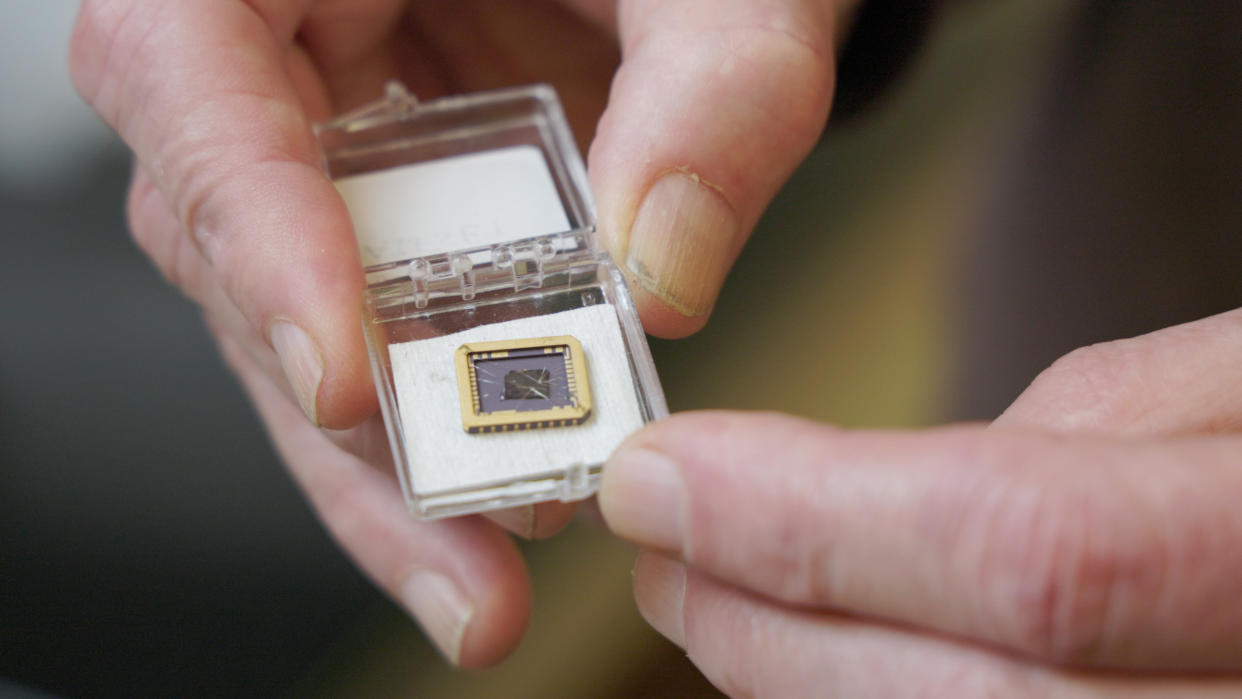World's 1st graphene semiconductor could power future quantum computers

Scientists have created the world's first working graphene-based semiconductor, which could pave the way for chips that power much faster PCs and quantum computers in the future.
The new semiconducting material, made from epitaxial graphene (a particular crystal structure of carbon chemically bonded to silicon carbide), allows for more mobility than silicon, meaning electrons move with less resistance. Transistors made in this way can operate at terahertz frequencies — 10 times faster than the silicon-based transistors used in chips used today — the researchers wrote in a study published Jan. 3 in the journal Nature.
Semiconductors have properties of both conductors and insulators. At the right temperature range, electrons move through the semiconductor material — but only if a certain amount of energy is applied.
Almost every chip uses a semiconductor made from silicon, but the material is reaching its limits, lead researcher Walt de Heer, a professor at the Georgia Institute of Technology, told Live Science in an email. These limits include the maximum speed at which transistors can "switch" between their on-off positions, the heat they generate through resistance and the smallest size people can make them.
This means the rapid advancements we've seen throughout the history of computing are beginning to slow.
Related: Rare magnetism found in the world's strongest material
Graphene, meanwhile, is made from a single layer of carbon atoms tightly bound in a hexagonal lattice, and is a better conductor than silicon, meaning electrons move with less resistance through the material.
Despite its favorable properties, graphene has never been harnessed in electronics because of the lack of a "band gap" — a minimum amount of energy needed to move electrons when an electric field is applied to it. Band gaps are what enable transistors to switch on and off.
To function as a working transistor, the graphene must be treated in some way, but in the past, this has damaged its properties, de Heer said.
READ MORE
—Scientists create light-based semiconductor chip that will pave the way for 6G
—New brain-like transistor goes 'beyond machine learning'
But the researchers worked around this challenge by fusing graphene onto silicon carbide using special furnaces and a special heating and cooling process. By putting atoms on the graphene that "donate" electrons to the system, which is known as "doping", they created a functional graphene semiconductor with a band gap.
Not only is this the first graphene-based semiconductor to work, but it can also be integrated into existing manufacturing processes. The transition from making silicon wafers to the silicon carbide wafers used in epitaxial graphene is "quite feasible," de Heer said.
Graphene-based semiconductors also have a potential future use in quantum computing, the researchers wrote in the study.
"Like light, electrons in graphene have quantum mechanical wave-like properties that can be accessed in devices, particularly at very low temperatures," de Heer said.
This is an area the scientists hope to explore in subsequent research, but de Heer said it remains to be seen whether graphene-based semiconductors can work better than the current superconducting technology, which is used in the most advanced quantum computers.

